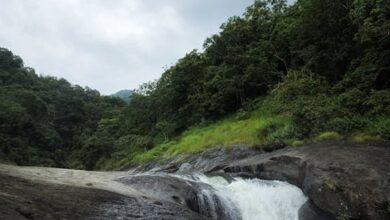How a Travel YouTuber Captured Nepal’s Revolution for the World

How a Travel YouTuber Captured Nepal’s Revolution for the World
Estimated reading time: 6 minutes
- Travel YouTuber Harry Jackson unexpectedly became a primary international source for news on Nepal’s Gen Z protests, broadcasting the revolution to the world.
- His raw, authentic, and immediate coverage, leveraging digital platforms, offered a perspective often missed by traditional media and directly influenced global narratives.
- Jackson’s experience highlights the growing power of citizen journalism, demonstrating how individuals with smartphones can document history, challenge censorship, and bring critical stories to the fore.
- Documenting real-world events requires prioritizing safety and ethics, strategically leveraging platform strengths, and building networks for information verification.
- The democratisation of news reporting pushes traditional media towards greater speed, transparency, and engagement with ground-level realities.
The world of news is changing. Gone are the days when major events were solely the domain of large media conglomerates. Today, an individual with a smartphone and a strong internet connection can break stories, challenge narratives, and bring untold truths to a global audience. No one exemplifies this shift more dramatically than Harry Jackson, a travel YouTuber whose picturesque journey through Nepal took an unexpected, revolutionary turn.
Initially, Jackson’s itinerary in Kathmandu involved vibrant markets, ancient temples, and stunning mountain vistas—the usual fare for his popular travel vlogs. However, fate, or perhaps the compelling pulse of history, had other plans. As Nepal’s Gen Z youth ignited a powerful series of protests, challenging the status quo and demanding change, Jackson found himself inadvertently at the epicentre of a burgeoning revolution.
Harry Jackson went into Kathmandu as a tourist. He ended up being one of the main international sources of news on Nepal’s Gen Z protests. His camera, once pointed at serene landscapes, pivoted to capture the raw energy, frustration, and hope of a generation rising. This article delves into how a digital nomad became an accidental war correspondent, reshaping our understanding of crisis reporting.
From Backpacker to Broadcast – The Accidental Reporter
Harry Jackson’s channel, known for its immersive travel experiences and candid cultural insights, had built a loyal following. His appeal lay in his authentic, unpolished style, a stark contrast to the often-staged perfection of traditional travel shows. When the first murmurs of protest turned into a roar on the streets of Kathmandu, Jackson’s innate curiosity, a defining trait of any good traveler, kicked in.
Instead of seeking out a safe distance or a quiet retreat, Jackson felt a compelling urge to document what he was witnessing. Armed with his vlogging camera and an unfailing internet connection, he began to record the demonstrations. His initial footage wasn’t framed by journalistic intent but by a human desire to share an unfolding, significant event. Yet, his raw, on-the-ground perspective quickly became invaluable.
Traditional news crews, often constrained by logistics, access, and editorial filters, couldn’t match the immediacy and intimacy of Jackson’s feeds. He wasn’t reporting from a designated media zone; he was walking alongside the protesters, capturing their chants, their faces, their confrontations with authorities, and their unwavering spirit. His reports offered a visceral, unfiltered window into the heart of the Nepali youth movement, a viewpoint often missed by mainstream media.
The Power of Authenticity in Crisis Coverage
Jackson’s coverage resonated not just with his existing subscriber base but with a much wider global audience. The reason? Authenticity. In a world increasingly wary of “fake news” and biased reporting, his genuine reactions, direct interactions, and lack of overt political agenda lent his content a credibility that seasoned news outlets sometimes struggle to achieve.
His live streams and daily video updates weren’t polished news segments; they were real-time dispatches from the frontline. Viewers could hear the shouts, feel the tension, and witness events as they unfolded. This direct, unmediated access fostered a deeper sense of connection and trust. He wasn’t interpreting the revolution for his audience; he was inviting them to experience it with him.
Furthermore, Jackson’s pre-existing audience, largely composed of young, digitally-native individuals, became an amplifying force. They shared his videos across social media platforms, tagging international news organizations and human rights groups. This organic dissemination ensured that his footage, and the story of Nepal’s Gen Z protests, reached corners of the internet that traditional media might have struggled to penetrate.
Navigating the Digital Frontline: Tools and Techniques
What allowed Jackson to become such a pivotal source of information? Primarily, the democratisation of technology. His main tools were a high-quality smartphone camera, a compact mirrorless camera (typical for a travel vlogger), portable power banks, and a reliable mobile internet connection. These modest tools, combined with his understanding of digital platforms, proved surprisingly effective.
He leveraged YouTube’s live-streaming capabilities to offer real-time updates, allowing viewers to comment and interact, creating a sense of shared experience. Short, digestible video clips, often uploaded to Instagram and TikTok, served as immediate news flashes, capturing crucial moments and disseminating them rapidly. His consistent uploading schedule and willingness to engage with his audience also kept momentum high.
Jackson’s existing skills as a content creator—storytelling through visuals, engaging narration, and an intuitive grasp of what captures attention—translated seamlessly into crisis reporting. He understood how to frame shots to convey emotion, how to use natural sound to build atmosphere, and how to speak directly to the camera in a way that felt personal and trustworthy. This blend of raw access and digital savvy created an unprecedented form of citizen journalism.
Actionable Steps for Documenting Real-World Events
Harry Jackson’s experience offers valuable lessons for anyone wishing to document significant events, whether as a citizen journalist or a content creator with a conscience. Here are three actionable steps:
-
Prioritize Safety & Ethical Considerations: Your personal safety must always be paramount. Assess risks constantly and know when to withdraw. Ethically, strive for accuracy, seek multiple perspectives, and be mindful of the privacy and dignity of those you film, especially in sensitive situations. Verifying information before sharing is crucial to maintain credibility.
-
Leverage Your Platform’s Strengths: Understand the unique features of your chosen platform (e.g., YouTube’s long-form and live streaming, TikTok’s short-form virality, Instagram’s visual storytelling). Tailor your content to maximize its reach and impact on each. Engage with comments and questions to build community and trust.
-
Build a Network & Verify Information: Connect with locals, community leaders, and even established journalists or NGOs on the ground. These connections can provide vital context, safety advice, and help you verify facts. Cross-referencing information from multiple sources helps ensure your reporting is as accurate and balanced as possible.
A Real-World Impact
Jackson’s immediate, unfiltered coverage didn’t just inform his followers; it directly influenced traditional media narratives. For instance, when state-controlled media initially downplayed the size and intensity of a particular protest march in Kathmandu, Harry’s live stream, showing thousands of protestors filling arterial roads, provided irrefutable counter-evidence. This specific footage was eventually picked up by several international news agencies, forcing them to re-evaluate and update their own reports, acknowledging the true scale of the movement. His raw video clips showing instances of disproportionate force used against peaceful demonstrators also served as critical evidence for human rights observers, offering a stark contrast to official statements.
The Broader Impact – Citizen Journalism’s New Frontier
The story of Harry Jackson in Nepal is not an isolated incident but a powerful microcosm of a larger global trend. From the Arab Spring to the Black Lives Matter movements, individual citizens equipped with smartphones have consistently played a critical role in documenting history, challenging censorship, and bringing overlooked stories to the fore. This democratisation of news reporting has profound implications for traditional media, pushing them to be faster, more transparent, and more engaged with ground-level realities.
While citizen journalism presents challenges regarding verification and potential bias, its undeniable strength lies in its immediacy, authenticity, and ability to circumvent established gatekeepers. It gives a voice to the voiceless and often provides the critical first glimpses of events that shape our world.
Conclusion
Harry Jackson’s unexpected journey from travel vlogger to frontline reporter in Nepal illustrates the incredible power of individual platforms in the digital age. His story is a testament to the fact that news can emerge from anywhere, reported by anyone, provided they possess a camera, a connection, and a conscience. He not only documented a revolution but helped broadcast its message globally, proving that authenticity and immediacy can cut through the noise and capture the world’s attention.
His experience challenges us to rethink who can be a journalist and how news is consumed. In an era where information spreads at light speed, the accidental reporter, armed with nothing but a desire to share what’s happening, can be as influential as any seasoned correspondent.
What significant event in your community or the world are you passionate about? Consider how your unique perspective and digital tools could help shed light on it for others. Engage, document, and share responsibly – your voice matters.
FAQ
Who is Harry Jackson and what did he do in Nepal?
Harry Jackson is a travel YouTuber who, during a trip to Kathmandu, accidentally became a frontline reporter for Nepal’s Gen Z protests. He documented the unfolding revolution with his vlogging camera, providing raw, immediate, and unfiltered coverage to a global audience.
How did Harry Jackson’s reporting differ from traditional media?
Jackson’s reporting was distinguished by its authenticity, immediacy, and on-the-ground perspective. Unlike traditional news crews, he walked alongside protesters, offering visceral, unfiltered views through live streams and daily video updates. His lack of overt political agenda and direct interactions fostered greater trust and connection with viewers.
What tools did Harry Jackson use to document the protests?
He primarily used a high-quality smartphone camera, a compact mirrorless camera (typical for travel vlogging), portable power banks, and a reliable mobile internet connection. He leveraged YouTube for live streaming, and Instagram and TikTok for short, digestible clips.
What are the ethical considerations for citizen journalists?
Key ethical considerations include prioritizing personal safety, striving for accuracy, seeking multiple perspectives, being mindful of the privacy and dignity of those filmed, and verifying information from multiple sources before sharing.
What is the broader impact of citizen journalism?
Citizen journalism democratizes news reporting, allowing individuals to document history, challenge censorship, and bring overlooked stories to global attention. It pushes traditional media to be faster, more transparent, and more engaged, while providing immediacy, authenticity, and a voice to the voiceless.





